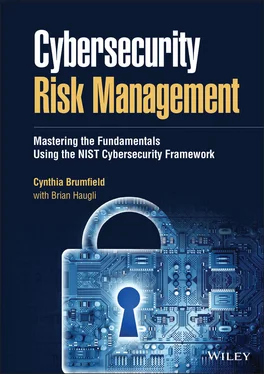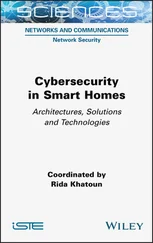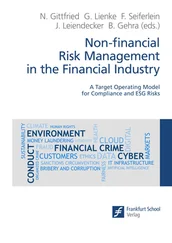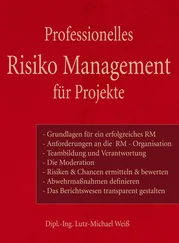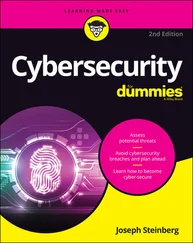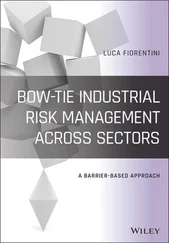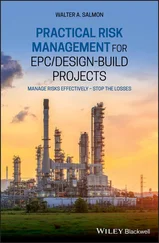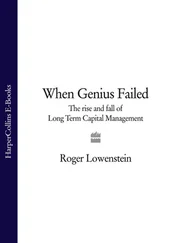Cynthia Brumfield - Cybersecurity Risk Management
Здесь есть возможность читать онлайн «Cynthia Brumfield - Cybersecurity Risk Management» — ознакомительный отрывок электронной книги совершенно бесплатно, а после прочтения отрывка купить полную версию. В некоторых случаях можно слушать аудио, скачать через торрент в формате fb2 и присутствует краткое содержание. Жанр: unrecognised, на английском языке. Описание произведения, (предисловие) а так же отзывы посетителей доступны на портале библиотеки ЛибКат.
- Название:Cybersecurity Risk Management
- Автор:
- Жанр:
- Год:неизвестен
- ISBN:нет данных
- Рейтинг книги:3 / 5. Голосов: 1
-
Избранное:Добавить в избранное
- Отзывы:
-
Ваша оценка:
- 60
- 1
- 2
- 3
- 4
- 5
Cybersecurity Risk Management: краткое содержание, описание и аннотация
Предлагаем к чтению аннотацию, описание, краткое содержание или предисловие (зависит от того, что написал сам автор книги «Cybersecurity Risk Management»). Если вы не нашли необходимую информацию о книге — напишите в комментариях, мы постараемся отыскать её.
Cybersecurity Risk Management: Mastering the Fundamentals Using the NIST Cybersecurity Framework
Cybersecurity Risk Management
Cybersecurity Risk Management
Cybersecurity Risk Management — читать онлайн ознакомительный отрывок
Ниже представлен текст книги, разбитый по страницам. Система сохранения места последней прочитанной страницы, позволяет с удобством читать онлайн бесплатно книгу «Cybersecurity Risk Management», без необходимости каждый раз заново искать на чём Вы остановились. Поставьте закладку, и сможете в любой момент перейти на страницу, на которой закончили чтение.
Интервал:
Закладка:
93 69
94 70
95 71
96 72
97 73
98 74
99 75
100 76
101 77
102 78
103 79
104 80
105 81
106 82
107 83
108 84
109 85
110 86
111 87
112 88
113 89
114 90
115 91
116 92
117 93
118 94
119 95
120 96
121 97
122 98
123 99
124 100
125 101
126 102
127 103
128 104
129 105
130 106
131 107
132 108
133 109
134 110
135 111
136 112
137 113
138 114
139 115
140 116
141 117
142 118
143 119
144 120
145 121
146 122
147 123
148 124
149 125
150 126
151 127
152 128
153 129
154 130
155 131
156 132
157 133
158 134
159 135
160 136
161 137
162 138
163 139
164 140
165 141
166 142
Academic Foreword
As a professor who has developed cybersecurity education programs for industry, academia, and the government, I know first-hand how difficult it can be for even advanced IT professionals to grasp the complex concepts in cybersecurity. In my role as Executive Director of the Center for Information Assurance and Cybersecurity at the University of Washington in Seattle, among other positions I hold, I have seen even the best and brightest of the nation’s high-tech sector struggle when it comes to this still-new discipline. The difficulty is compounded by the varied missions that public, private, and academic organizations pursue.
My center at the University of Washington is a Center of Academic Excellence in both Cybersecurity Education and Research, so designated by the National Security Agency and the Department of Homeland Security. This honor means that we are well placed to help bridge the cybersecurity communications gaps that exist across crucial sectors of society: government, industry, and academia.
At the University of Washington, we take a pragmatic approach to equipping our students with the skills they need to enter the cybersecurity workforce. We emphasize critical thinking along with information management and technical skills so that we graduate ‘breach-ready’ students. Since there is no system that is 100% secure, we ingrain in our students the importance of having risk management tools in their toolkit, so they are equipped to make rational choices about what to protect and where to spend scarce cybersecurity dollars. We’ve found that the NIST Cybersecurity Framework is highly useful in conveying concepts in risk management.
The Framework does not offer step-by-step instruction on installing a firewall, for example, nor does it recommend any specific technology for, say, managing patch updates. Instead, it offers a way to comprehensively manage cybersecurity risks by drawing on the best-of-breed conceptual thinking from other risk management frameworks, informed by prevailing standards. It teaches our students how to think about solving a cybersecurity problem and that there is no ‘one-size-fits-all’ solution.
More importantly, NIST designed the Framework as a cybersecurity management tool to foster better communications among internal and external stakeholders. As a result, it bridges the communication gaps among silos, helping to create a common language to solve the growing number of cybersecurity problems. This book, with its practical approach to applying the Framework, should help students at all levels – undergraduate, graduate, and continuing education—become more Work-ready.
By walking the fine line between nitty-gritty technical discussions and high-level conceptual models, Cybersecurity Risk Management: Mastering the Fundamentals using the NIST Cybersecurity Framework should leave its readers with a new way of thinking about cybersecurity risk management. I hope that it also gives them the confidence to dive deeper into the growing number of cybersecurity disciplines that make up the cybersecurity field.
Barbara Endicott-Popovsky, Ph.D., CRISC
Executive Director, Center for Information Assurance and Cybersecurity
Professor, University of Washington
November 2021
Acknowledgments
This book is the culmination of at least eight years of research on how organizations can better position themselves to manage cybersecurity risk. My work on the material in this book began in 2013 when CSO Online commissioned me to document the development of what is now known as the NIST Cybersecurity Framework.
To accomplish this documentation, I attended all six of the workshops that led to the Framework’s release in 2014, flying to universities around the country and talking to the world’s leading cybersecurity experts for my CSO reports. A trade association also hired me to help industry executives understand cybersecurity. This client subsequently hired me to develop a series of courses to help train their workforce, particularly their non-cybersecurity technical personnel, in the best risk management practices using the NIST Cybersecurity Framework as a guide. (And I’m grateful that I was able to retain the rights to most of my work for this client.)
I’ve based the content of this book on the many discussions I have had with experts who have graciously given me their time over the years to explain how they manage risks in their organizations. Thanks to the following individuals in particular, whose skill and guidance helped bring many of the NIST concepts, so often abstract and high-level, down to earth and understandable to non-cybersecurity tech workers:
Paul Anderson, Director of Corporate Information Services, Hubbard Broadcasting,
Howard Price, formerly CBCP/MBCI, Senior Manager, Business Continuity Planning Corporate Risk Management, The Walt Disney Company,
Dan Ryan, formerly Vice President, Information Technology, Nexstar Broadcasting, Inc.; now Head of Information Technology at Standard Media Group LLC,
Eric Winter, Vice President of Investigations and Technical Risk, Cox Enterprises,
Mike Kelley, Vice President, Chief Information Security Officer, The E.W. Scripps Company,
Jim Davis, formerly Director, Infrastructure & Service Delivery, Cox Media Group,
Michael Funk, Director of Information Technology, Quincy Media, Inc., and
Eric Neel, Director Information Technology Infrastructure, Hubbard Broadcasting
I owe a huge debt of gratitude to Wayne Pecena of Texas A&M University for his expert review of most of the written material in this book. Thanks, Wayne, for your kind, wise and knowledgeable input into the book, particularly your sage advice to small organizations.
I’m incredibly grateful to the other cybersecurity experts who lent their experience to the Voices of Experience commentary throughout the book, including Patrick Miller, Lesley Carhart, Jason Boswell, and Casey Ellis. Your generosity will help your peers and other IT professionals to make their organizations more secure.
Finally, thanks to the countless other cybersecurity experts who I have interviewed over the years. Your contributions to helping people understand how to apply complex risk management concepts in the real world are invaluable contributions to the field. Without you, this book would not be possible.
Cynthia Brumfield
May 2021
I would first thank Cynthia for bringing me into this project. My hope has always been to see the NIST Cybersecurity Framework adopted by any organization looking to better their security posture on a well-established national standard. This book will allow that to happen. I would also like to thank those CISOs that lent their Voices of Experience to bring out their practitioners’ views: Omer Singer, Bill Roberts, Joe Klein, Helen Patton, Sounil Yu, Gary Hayslip, Mike Waters, and Eric Hussey. Lastly, thank you to my wife Kim and daughter Juli for all your support with everything we do.
Читать дальшеИнтервал:
Закладка:
Похожие книги на «Cybersecurity Risk Management»
Представляем Вашему вниманию похожие книги на «Cybersecurity Risk Management» списком для выбора. Мы отобрали схожую по названию и смыслу литературу в надежде предоставить читателям больше вариантов отыскать новые, интересные, ещё непрочитанные произведения.
Обсуждение, отзывы о книге «Cybersecurity Risk Management» и просто собственные мнения читателей. Оставьте ваши комментарии, напишите, что Вы думаете о произведении, его смысле или главных героях. Укажите что конкретно понравилось, а что нет, и почему Вы так считаете.
